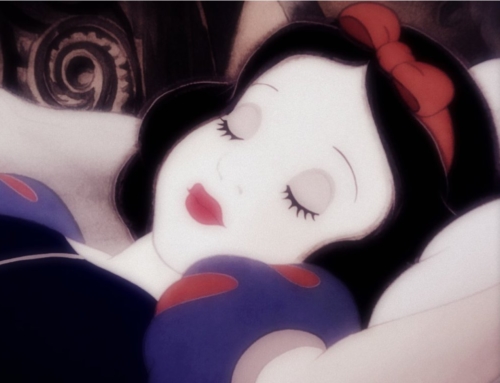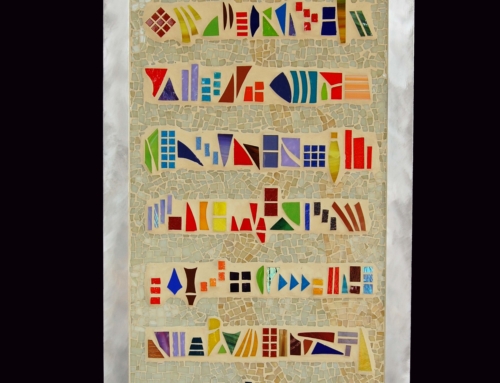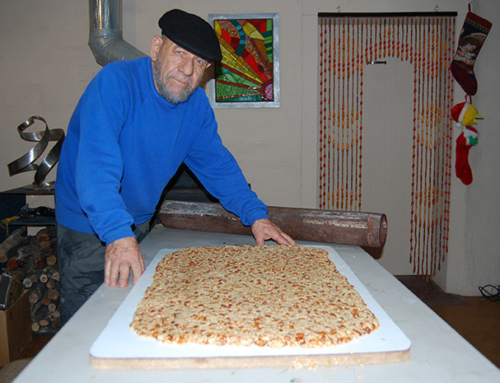Note: This is one of eight “Cultural Moments” included in my book MOSAICS WITH ROSANO – A BEGINNER’S GUIDE TO CREATING ARTFUL MOSAICS. Copies of this and other of my books can be purchased by contacting me.
Email: aprosano@gmail.com
Facebook Private Message
Snailmail: 2550 W. Moore Road Tucson, AZ 85755 Tel. 520-297-3606
WHEN GINO SEVERINI WAS A YOUNG CHILD in Cortona, Italy (about 50 miles southeast of Florence), a French artist Georges Seurat, in Paris, was painting the famous ‘A Sunday Afternoon on the Island of La Grand Jatte’. Using small dabs of paints Seurat was using a technique which later came to be known as Pointillism. Seurat used the term ‘divisionism’ – the idea of separating colors into small points painted side-side. These were to be blended by the eyes of the viewer. A quarter century later, Gino Severini would study and be captivated and influenced by Seurat’s paintings.
Looking at a detail of the Seurat painting, even the casual observer can see similarity between the painting’s dots of color and the tesserae of ancient mosaics.
Severini, despite being from a poor family, was able to get an art education in Rome, where he was first exposed to pointillism Italian style. Severini, after several years, was unable to support himself as an artist in Italy and moved to Paris in 1906, where he very quickly found friendships with Matisse, Modigliani, Picasso, and a number of other futurist and avante garde artists.
Over the years, Severini was a key figure in Parisian art circles as both an artist and writer of articles about art and ideas which promoted modernism. However, his life was constantly involved with monetary struggle, his physical illnesses, and family loss. In his autobiography, Severini says … “mere survival absorbed all of my energy. The cold in the sixth-floor Parisian room without proper bedding, enough food and heat, was absolutely murderous.” Having read the English language translation of his 1946 autobiography “The Life of a Painter”, published twenty years before his death, I was struck by the man’s honesty and down-to-earth manner in describing his art world in Paris inhabited by so many famous name artists (at least from today’s viewpoint), many of whom considerably overshadowed him.
Severini was an important figure in modern art developments with a long career as a painter, fresco muralist, and mosaicist. His works were included in prestigious international exhibitions and won a number of important prizes, and yet, it seemed he could never capitalize on the notoriety. In his later years (not covered in the autobiography), he focused on mosaic as a maker, designer, teacher, and promoter and was a driving force at the School of Mosaic in Paris in 1950, and became known as ‘The Father of Modern Mosaic”. He had studied the Early Byzantine mosaics of Ravenna, Italy and knew the modern mosaicists of the same city, he being unafraid to climb the scaffolds and work alongside them. The mosaicist, he felt, was as true an artist as any painter and likened their placement of tesserae to the brushstrokes of Cezanne or Seurat’s points of color. He talked and wrote about the mosaic as a true art form.
Aureleo Rosano 2018
NOTES : For me, reducing a complex artistic life to a brief paragraph or two is a daunting task. Of course, that is true for any person of historical importance. In some manner, if you are now involved in mosaic work, your work has been influenced by the work of Gino Severini. I strongly suggest the following research:
https://en.wikipedia.org/wiki/Gino_Severini … General information about the artist
https://www.wikiart.org/en/gino-severini … Excellent image collection of Severini’s works
GINO SEVERINI: From the Future to the Past by Ilona Jesnick , a splendid article from Issue #6 of Andamento, the journal of the British Association for Modern Mosaic (BAMM)
https://issuu.com/nancie_mills_pipgras/docs/severini_pdf
GINO SEVERINI: “THE LIFE OF A PAINTER” translated by Jennifer Franchia from the Italian-language autobiography “La Vita di un Pittore” ISBN 8-691-24419-8


